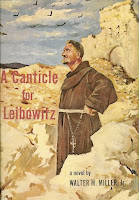
Written and Directed by: J. J. Abrams
In the great tradition of slightly-supernatural adolescent adventure movies, J. J. Abrams presents a slightly better version of his previous monster movie "Cloverfield." This film follows in the footsteps of classics such as "E.T." and "The Goonies" - both of which, interestingly enough, were produced by Steven Spielberg who also produced this film.
Joe (Joel Courtney) and his friends enjoy making movies on their Super 8 camera. One night they sneak out with the local bad-girl Alice (Elle Fanning) to film a scene for their movie at a local train station, but end up accidentally filming a horrific train crash. And from the wreckage, something unearthly arises. Over the next days, strange things start happening around town, and the military (embodied, menacingly enough by Noel Emmerich) begins secret operations. As civil society starts to fall apart, Joe and his friends try to unravel the mystery and stop whatever it is that escaped from the train wreck.
There were many successful features in this film. Most notably, the train wreck sequence was an incredibly stunning scene from a visual-effects standpoint. I'm not sure if it will hold up on the small-screen, but in the theater it was quite impressive. Abrams also did a great job of keeping the monster off-screen, allowing for some great "jump" moments and terrifying scenes without diluting the magic of the film with gore.
Especially impressive was how well written the adolescent characters were. Most films - even films theoretically about children and adolescents - tend to treat them in one of two ways: mature adults in younger bodies, or merely 0ne-dimensional. "Super 8" though managed to capture the social dynamics of youth groups for what they are - rich, complex, and constantly changing. Even though some of the moments were used as gags, the interactions between the boys is incredibly accurate. Overall, the teenagers in the movie actually seemed like, well, teenagers. (Not to mention that the whole film could be a metaphor for the tumultuous, sometimes scary, changes going on during adolescence.)
By the way: It's totally worth it to stay through the credits to see the "movie within a movie" the boys were making.
This film follows well in the genealogy of "E.T." and "The Goonies." Unfortunately, it didn't go anywhere beyond what had already set forth in previous movies of the genre. It left a slightly empty feeling at the end that nothing new had really been done, that no new precedent had been set by the movie, and that Abrams hadn't taken the opportunity to carve out his own landmark. Instead, the movie felt like a derivative of the other films (though with more modern effects). In the end, it seemed more like an exercise in genre film making - an attempt to make a movie "like those other movies" - rather than in making a whole new film and taking it in a different direction.
I also have to note - and I'll let you know now that there are spoilers in this paragraph - that the movie ended in the way that I hate most movies to end. We see the monster. And, frankly, we see too much of the monster. And, even more frankly, the monster isn't that scary looking and was much more terrifying when it was just "that shadowy thing making a lot of noise just outside our field of vision." Too often we see the monster, it's motives are explained, and some kind of moral lesson is taught. To me, the movie would have been much more interesting if the monster had simply gone "home" without ever knowing what it really was.
One more thing: This movie had a lot of "fat" that could have been trimmed. The whole subplot with the biology teacher was too long and completely unnecessary - it didn't add to the movie in any real way except to serve as a deus ex machina explanation of a few things. The same goes for several other minor characters who get names and have backgrounds but serve no major purpose except to advance the plot quickly at points. A little more tightening up of the story would have streamlined it a bit and made the film more efficient.
"Super 8" simply is what it is - no more, no less. It was entertaining and told a fun story, but did not go beyond being an imitation (granted, a solid imitation) of other similar films. It's worth seeing on the big screen for some of the visuals, but don't drop eight bucks on it if there's something else you'd rather see.
 Directed by: Alan J. Pakula
Directed by: Alan J. Pakula









